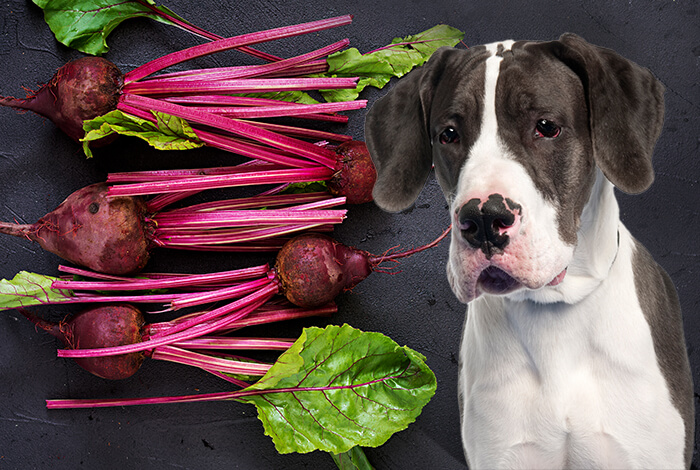Can dogs eat beets? Yes, dogs can have beets. Beet or beetroot is a root vegetable packed with dietary fiber, vitamin B9, iron, manganese, and potassium. It has many health-boosting benefits for dogs, including increasing their immunity against canine diseases, making it a healthy addition to their diet.
But how much beet can we give to dogs, and what are the best ways to serve it? Here are the answers that dog owners are looking for about this vegetable:
Can dogs have beets?
Yes, our furry pals can enjoy snacking on beets. This veggie contains several micronutrients that are vital for maintaining the healthy body function of dogs.
Do not forget to seek your vet’s advice before incorporating beets and other human foods into your dog’s diet.
Are beets safe for dogs?
 Beets offer many health benefits for our furry pals. However, this vegetable also has a few drawbacks. One of the biggest concerns with feeding beets to dogs is the veggie’s high oxalate levels.
Beets offer many health benefits for our furry pals. However, this vegetable also has a few drawbacks. One of the biggest concerns with feeding beets to dogs is the veggie’s high oxalate levels.
Studies show that oxalate can cause the formation of kidney stones in dogs. Hence, beets are not the best vegetable option for dogs with renal health problems.
Besides being high in oxalates, beets are high in acidity as well. If you feed too much beets to your dog, he may end up experiencing digestive system problems such as digestive upset and diarrhea.
Are beets good for dogs?
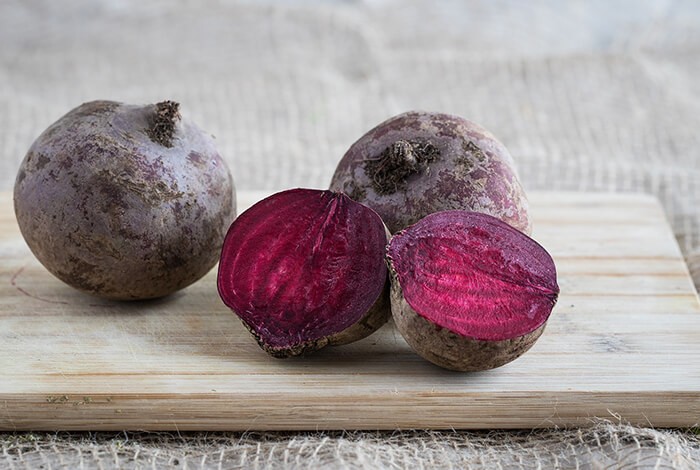 Yes, beets possess amazing nutritional properties that support dogs’ overall health. Including beets in a dog’s diet can aid in keeping him in good shape.
Yes, beets possess amazing nutritional properties that support dogs’ overall health. Including beets in a dog’s diet can aid in keeping him in good shape.
Here are some of the fantastic health benefits of beets for our furry companions:
Prevent iron deficiency
Iron is essential in transporting oxygen to blood cells. A lack of iron in your dog’s system will consequently result in anemia. Beets contain exceedingly high amounts of iron, which can increase iron levels.
If your dog is suffering from iron deficiency, beets are an excellent supplement to his dog food. However, seek the vet’s opinion first before incorporating anything into your dog’s regular diet.
Rich in essential nutrients
Beets are rich in vitamins A, B1, B2, B6, and C and are also packed with copper, calcium, magnesium, phosphorous, and sodium.
The vitamins and minerals help improve your dog’s blood, heart, liver, and digestive tract and help maintain his skin and coat healthy.
Help soothe inflammation
Apart from accidents, most illnesses in dogs start with some form of inflammation. Beets have anti-inflammatory properties that are effective against health issues such as arthritis and allergic reactions.
Get rid of toxins
Beets possess belatains, which are water-soluble antioxidants that give the vegetable its red color. These are excellent neutralizers of toxins. These play a big role in purifying your dog’s blood of heavy metals, toxins, and waste.
Protect your dog from cancer
Significant amounts of antioxidants and phytonutrients, including betalains, are found in beets. These have strong anticancer properties that safeguard your dog from becoming susceptible to certain types of cancer.
Aid in maintaining a healthy weight
Gamma amino acids and digestive fiber found in beets, especially beet pulp, promote good metabolism. Moreover, betaines improve your dog’s liver functions and make them more efficient in breaking down fats.
Beets are also high in carbohydrates, which make him feel full quickly while eating less and, at the same time, boost his energy levels.
Can my dog eat raw beets?
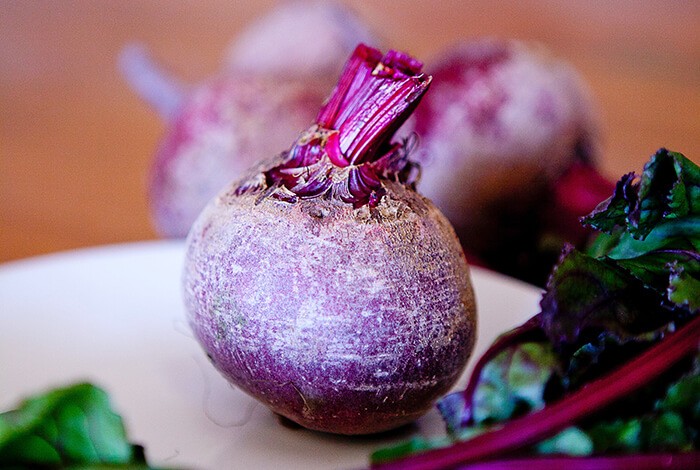 Yes, dogs can eat beets raw, but make sure that they are cut or shredded into small pieces. Never feed the entire vegetable to your dog since it is a potential choking hazard.
Yes, dogs can eat beets raw, but make sure that they are cut or shredded into small pieces. Never feed the entire vegetable to your dog since it is a potential choking hazard.
It can obstruct the small intestine, a severe health condition requiring immediate veterinary attention.
Can dogs eat cooked beets?
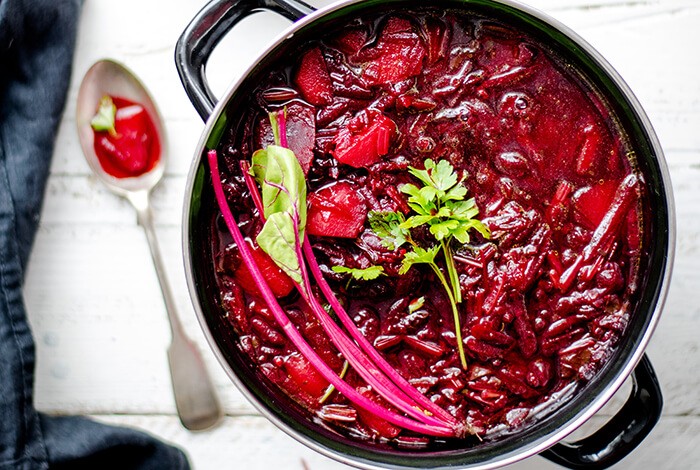 Yes, cooked beets are good for dogs as they’re easily digestible than raw beets. Choose high-quality organic beets for cooking. First, slice the beets into small pieces. Lightly boil or steam the beet slices to preserve their nutrients.
Yes, cooked beets are good for dogs as they’re easily digestible than raw beets. Choose high-quality organic beets for cooking. First, slice the beets into small pieces. Lightly boil or steam the beet slices to preserve their nutrients.
Avoid using other ingredients such as oil, salt, sugar, and spices. These are unhealthy additions that might irritate your dog’s stomach and can have reverse health benefits.
Can dogs eat pickled beets?
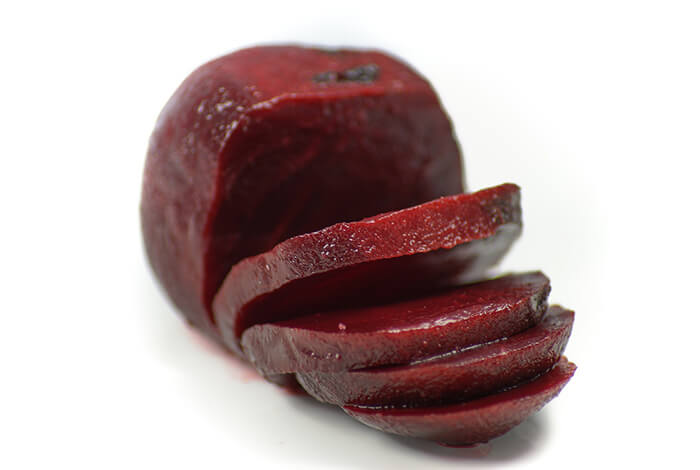 No, pickled beets are not safe for dogs. Pickled beets often contain many additives and high levels of salt. If consumed in large amounts, they can cause dehydration, raise high blood pressure in dogs, and induce poisoning due to high sodium levels.
No, pickled beets are not safe for dogs. Pickled beets often contain many additives and high levels of salt. If consumed in large amounts, they can cause dehydration, raise high blood pressure in dogs, and induce poisoning due to high sodium levels.
Feeding canned beets to your furry pal is greatly discouraged.
Can dogs eat white beets?
White beets are safe for dogs to eat, but they are not the healthiest choice. White beets have a sweeter taste compared to other varieties. This means white beets contain higher amounts of sugar, which is not beneficial for dogs.
Another beet variety that you should be cautious of is silver beets. These beets are not toxic to dogs, but they are packed with fiber. Carelessly feeding silver beets to your dog will cause him to suffer from gastric problems.
How much beets can dogs eat?
Limiting portions when feeding your dog beets must be strictly observed. It’s best to serve him with one to three slices of beets per day. If it’s his first time having beets, serve them in small amounts to avoid having an upset stomach.
Which types of beets are healthy options for dogs?
 Below is a list of beet varieties you can give to your furry friend. Keep in mind that the following types of beets should always be served in moderation:
Below is a list of beet varieties you can give to your furry friend. Keep in mind that the following types of beets should always be served in moderation:
- Red beets
- Golden beets
- Striped beets
- Cylindra beets
- Mangel-wurzel beets
- Baby beets
Home-made Beets Dog Treats
Follow this easy recipe to create paw-licking beet dog treats for your fur baby:
 Beets Peanut Butter Biscuit
Beets Peanut Butter Biscuit
 Ingredients
Ingredients
- 2 ½ cups of whole wheat flour
- 2 large eggs
- 1 cup of large beet, chopped or grated
- ½ cup of peanut butter, unsweetened and unsalted
Procedures
- Preheat the oven to 350 degrees.
- Combine chopped or grated beets and eggs. Then blend until smooth.
- Add peanut butter to the mixture and mix until well incorporated.
- Slowly add flour to the mixture. You may add water if necessary, but it should be no more than 1/8 cup.
- Transfer the dough into a bowl and knead until everything is properly combined.
- On a surface lined with waxed paper, roll out the dough into ¼-inch sheets.
- Use a cookie cutter to cut the desired shapes.
- Transfer to a parchment paper-lined cookie tray.
- Bake for 20 to 25 minutes.
- Let it cool and serve it to your dog.

